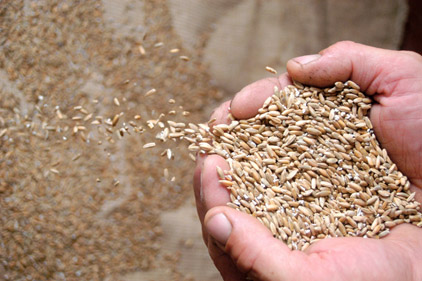Cynthia Harriman, director of food and nutrition strategies at Oldways/the Whole Grains Council, says she has theories about why barley is “always a bridesmaid, never a bride. One is that it falls somewhere in the middle on the grain spectrum We have the go-to group of grains we know really well, which includes wheat, rice, oats and corn. Then, there are the darlings of the ancient grain group, where we have kamut, teff, quinoa and amaranth. And kind of forgotten in the middle are barley and sorghum.”
Sorghum has also recently gained more attention, given its status as a gluten-free grain, and it benefits from being neutral-tasting and inexpensive because it’s widely grown, Harriman notes.
The highest in fiber of all the whole grains, barley’s common varieties have 17% fiber, compared to wheat, which is around 11%. Some varieties, such as one called Prowashonupana barley and marketed by ConAgra as Sustagrain, have fiber levels of up to 30%. Barley is especially high in the soluble fiber known as beta-glucan (also found in oats), which is believed to lower both overall and LDL (low-density lipoprotein) cholesterol.
Much of the barley eaten in the U.S. is pearled, which means it’s missing some or all of its bran layer. The hulled (which keeps bran loss to insignificant levels) and hull-less (hull) varieties are considered true whole-grain barley.
A quick search on the Whole Grains Council “whole grain stamp” product database revealed to Harriman that although it is found in numerous products—hot cereals, granola, 9- and 12-grain items and muesli—and baked products in flour form, barley is typically relegated to the middle of the pack. The few bright spots were barley’s inclusion as one of the first four ingredients is in Tostito’s recently launched whole-grain blend as part of its Artisan line and Cascadian Farms’ dark chocolate almond ancient grain granola.
So what’s the secret to getting consumers to start liking barley? Harriman says there’s potential to pull from its rich food history. It was one of the first domesticated grains in the Fertile Crescent, was part of ancient religious rituals that extended into the Middle Ages and was even considered a special food of gladiators. “Any food does well when tied in with history,” she says. “Look at khorasan kamut.”
Source: www.nutraingredients.com




